Read time: 5 minutes When Pacific salmon start to die in large numbers, with no identified cause, people take notice. This concern stems not only from the possibility of an environmental issue that could additionally affect human health, but also, in this case, from...
Tags
Molecular sleuthing using mass spectrometry to protect Pacific salmon populations
Read time: 5 minutes When Pacific salmon start to die in large numbers, with no identified cause, people take notice. This concern stems not only from the possibility of an environmental issue that could additionally affect human health, but also, in this case, from...
Mass spectrometer analysis gives you one more reason for taking a shower before swimming!
Read time: 8 minutes Researchers: Wei Wang, Yichao Qian, Jessica M. Boyd, Minghuo Wu, Steve E. Hrudey, Jinhua Li, Birget Moe, Claire F. McGuigan, Shengwen Shen and Xing-Fang Li, University of Alberta (Edmonton, Alberta, Canada), and Haiying Du, Jilin University...
Should you bring your PFAS testing in-house?
As the per- and polyfluoroalkyl substances (PFAS) regulatory landscape evolves in the US and across the globe, the interest in PFAS continues to grow. Drinking water and food packaging are under particular scrutiny, and monitoring programs and requirements will continue to expand to include an increasing variety of sample types and PFAS compounds.
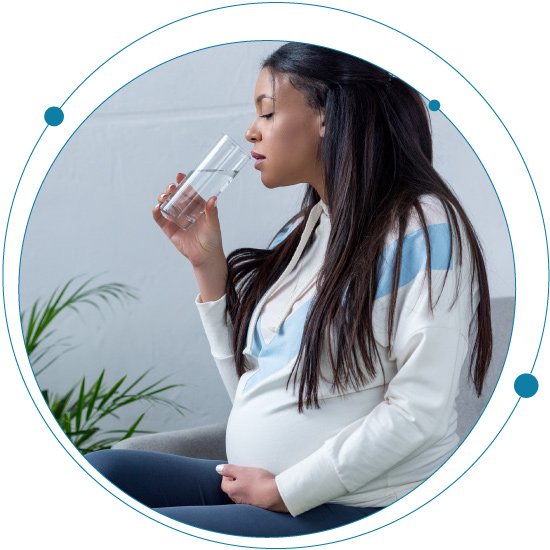
Top questions about the exposome of PFAS revealed
According to the CDC, the exposome is “the measure of all the exposures of an individual in a lifetime and how those exposures relate to health.”
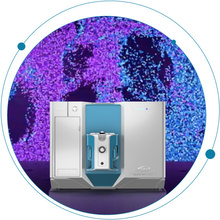
Breaking down the SCIEX Triple Quad™ 7500 LC-MS/MS System – QTRAP® Ready
Sensitivity and robustness carry different meanings in the world of mass spectrometry. Generally, sensitivity refers to an instrument’s ability to achieve lower limits of detection (LOD). Robustness, on the other hand, refers to an instrument’s ability to consistently...

Meet regulatory limits: Characterize and quantify PFAS and GenX in water using liquid chromatography-mass spectrometry
Per- and polyfluorinated alkyl substances (PFAS) continue to persist throughout the environment.Concerns about the health dangers posed by these contaminants, along with the possibility of biological toxicity of legacy PFAS such as perfluorooctanoic acid (PFOA) and...
Accurate mass LC-MS/MS for PFAS analysis without needing a blockbuster budget
If you’ve been following our recent blogs, you’ve probably seen quite a bit on how per- and polyfluoroalkyl substances (PFAS) are shaking up both the food and environmental industry. Even if you’ve not been following our blogs, you’ve probably seen a lot of media...

A rising star in food allergen research: proteomics of shellfish allergen
It’s important to know what you’re eating, especially if you suffer from a food allergy.
About 220 million people worldwide live with a food allergy.1 These numbers, along with the complexity and severity of conditions, continue to rise. In America, there are about 32 million food allergy sufferers—5.6 million of those are children under the age of 18.2.2 That’s 1 out of every 13 children, or about 2 in every classroom. From a financial perspective, the cost of food allergy childcare for US families is up to $25 billion
Environmental scientists: Why the SCIEX X500R QTOF system is perfect for PFAS research
The world of per- and polyfluoroalkyl substances (PFAS) research is a big one and one that’s currently front and center in environmental contamination concerns. Whether you work in industrial or academic environmental research, the issues surrounding these...
Trends shaping global environmental analytical testing
The only certainty in a changing environmental landscape Despite a 38-fold increase in environmental laws put in place around the world since 1972, the future of our planet is under the spotlight like never before. Mitigating climate change has arrived as our world's...

To Switch or Not to Switch? That is the Question.
Why Polarity Switching Matters The BasicsIn today’s busy analytical laboratories, productivity and high sample throughput are constant demands. More samples need to be analyzed in a shorter timeframe. Laboratories must work to use equipment at its maximum capacity,...

Environmental Scientists: Here’s Why You Should Consider Nominal Mass Spectrometry for Your Routine PFAS and Gen-X Testing in Drinking Water
How are you feeling about PFAS regulation right now? If you’re like us, you probably find it hard to pinpoint one specific feeling. But if we took a look at the current state of affairs, we’d all probably agree that it’s a minefield of uncertainty. Under the Safe...
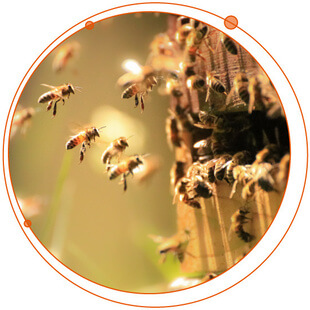
Global Trends That Will Affect Neonicotinoid Usage in 2019
Neonicotinoids have become the most widely used class of insecticide in the world, with registration in 120 countries. However, these pesticides have become embroiled in multi-year controversy in Europe and North America due to their risk to beneficial...

3 Dicamba Analysis Questions You Need to Ask Yourself Today
We blinked and the last two years went in a flash. It seems like just yesterday, the Dicamba herbicide controversy hit the headlines in 2016 and the EPA set the regulations to expire in two years. Fast forward to today. Dicamba is an acid herbicide used to kill...
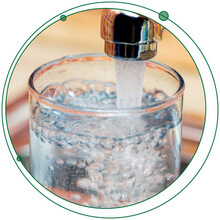
Something’s in the Water: Tackle Your PFAS Analysis
Exposure to per- and polyfluoroalkyl substances (PFAS) residues could be dangerous. These chemicals have been linked to a variety of adverse health effects including liver damage, thyroid disease, decreased fertility, high cholesterol, obesity, hormone suppression,...

Now You Can Overcome Your Food and Environmental Testing Obstacles
How do you safeguard human health and protect your reputation through meeting stringent global food and environmental safety standards? When it comes to testing food and environmental samples, the quality of your testing data is vital to your business. You need fast...

In Search of the Unknown
The production of high-quality drinking water entails rigorous treatment and testing procedures. For water suppliers’ laboratories, such as the Zweckverband Landeswasserversorgung in Germany, one of the major challenges is the identification of trace levels of organic substances, which can be achieved with the help of mass spectrometry.

How to Detect Additives in Cosmetics Amongst Ever Changing Regulations
In today’s technical blog, I’m talking about the cosmetics industry so let’s get right to it. According to a Research and Market report, “The Global Cosmetic market was $460 billion USD in 2014 and is estimated to reach 675 billion USD by 2020, growing at a rate of 6.4%.”1 The U.S. leads the pack with a reported $62 billion in revenue earned in 20162. So, what am I getting at? We know earnings are strong and consumers like their products. But the question remains, are these products that you put on your skin, hair, and ingest safe? Such is the thinking of scientists like me and other chemists who are routinely tasked with detecting minimal levels of potentially harmful ingredients in personal care products against ever-changing global regulations.

Single Injection, Routine Antibiotic Testing in Urine Samples
The consumption of pharmaceuticals and personal care products is a day to day occurrence. Once consumed the body excretes the remaining part of the compound which is not absorbed. This waste, flushed down the toilet, makes its way through the sewage system before arriving at a treatment facility where it was then processed with chemicals to ensure its cleanliness. Despite being washed, there can remain trace amounts of bacteria, hormones, metals, and antibiotics in whatever you consume, not just water
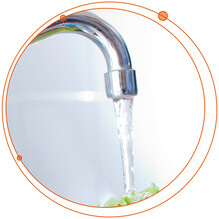
The Trouble with PFAS in Drinking Water
There has been a string of news articles concerning polyfluorinated alkyl substances (PFAS) in drinking water these days, and I must say, they have my attention. Here is the thing, when you think of drinking water in the United States, for example, crystal clear lakes, rivers, and groundwater along with effective water treatment come to mind. On the flip side, as safe, some supplies may be there are communities such as that of Flint, Michigan, which have been dealing with lead filled pipes for far too long. Contamination was so bad there that residents were provided bottled water for drinking purposes as the state decided who was responsible for replacing the affected water lines.

PPCP Detection in Drinkwater is no Match for the QTRAP® 5500
SCIEX is no stranger to drinking water analysis, and the Environmental Compendium once again addresses the topic in an application note which covers LC-MS/MS with Fast Polarity Switching. Using the QTRAP® 5500, researchers were able to detect a large panel of Pharmaceuticals and Personal Care Products (PPCP’s) while performing fast positive/negative switching all from a single injection. Method details go the distance in this application note, as five experiments were called into action for comparison.

Legal and Illicit Drugs in Wastewater Detected and Confirmed with QTRAP Technology
What happens when you up the sensitivity and lower detection limits on influent and effluent sewage tests? For starters, low levels of illegal drugs in samples begin to emerge. This is what researchers discovered when they combined the power of LC-MS/MS with the...
The detection of acid herbicides and urons by large volume injection
Pre-treatment versus direct injection – that is the question posed in the application note, “The Detection of Acidic Herbicides and Phenyl Ureas by LC-MS/MS with Large Volume Injection and Automated Column Switching.” It’s just one of the dozens of articles you will find within the Environmental Compendium (pages 1 to 4, pesticides) now available for download.
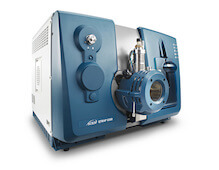
Perfluoroalkyl Acids in Drinking Water – EPA Method 537
The United States Environmental Protection Agency (EPA), under the 1996 Safe Drinking Water Act (SDWA), requires a new list of no more than 30 unregulated contaminants to be monitored by public drinking water systems. Known as the Unregulated Contaminant Monitoring Rule (UCMR), a new list is published every five years. The last rule, UCMR3, was published May 2, 2012, and is the focus of the following application note, “Analysis of Perfluoroalkyl (PFFA) Acids Specified under the UCMR3 Using the QTRAP® 6500 LC-MS/MS system,” which can be found in the Food and Environmental Compendium.

Glyphosate, a Polar Pest Put to Test
No other pesticide has courted more media attention and controversy in recent months than glyphosate, with governments and national agencies debating its use and health effects.
Using Mass Spectrometry to Identify and Quantify Contaminants in Water Samples
Access to clean wholesome water is one of our basic human rights. Human engineering has designed incredible methods to collect, filter, purify, store and distribute water to billions of us worldwide, but does this mean that our water is completely safe to drink? Also,...

Expert Advice to Help You with Routine Food Testing in the Lab
Between 3-6 November 2015, the Recent Advances in Food Analysis (RAFA) 2015 Symposium took place in Prague, Czech Republic.
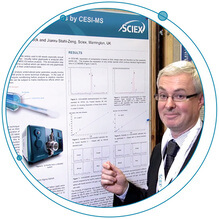
Polar Pesticide Analysis by CESI-MS for Routine Food Testing – A Poster Talk
Method development for routine food testing presents many challenges – whether you are looking to increase the speed of your screening or simplify your method there can be different solutions suited to the task at hand. During RAFA 2015 in Prague, Steve Lock, Market Development Manager for SCIEX Separations in EMEA outlines how CESI-MS may be best suited for polar pesticide analysis.

A Reliable Method for the Identification, Quantitation, and Confirmation of Pesticides
When carrying out routine pesticide identification tests in your lab how simple is the process of identification, quantitation, and final confirmation from sample to sample? A reliable method designed to generate multiple data sets and confirm sample data in parallel with your test can save an awful lot of time and effort which is especially helpful as the demand for routine testing increases. In this poster talk, Detlev Schleuder, Support Manager for Food & Environmental Markets, explains how the new QTRAP® 6500+ system can optimize your laboratory’s output with this simple method.

Five Tips for Safe Handling Holiday Decorations
Bring out the boxes of decorations this holiday season and while you are at it, keep in mind you could be facing dangerous exposure to chemicals too. From trees to garland, candles and toys, here are some tips to keep in mind for safe handling. Trees Fake trees are...



 Contact Support
Contact Support